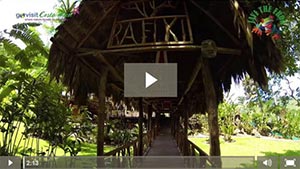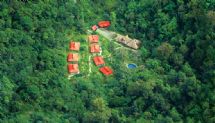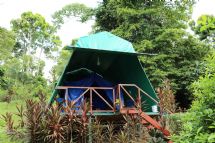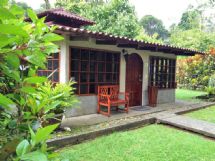Golfito National Wildlife Refuge, South Puntarenas

Cacao Pod on Tree can be made into chocolate
Golfo Dulce is not only a highly sought-out locale for eco-tourism, but also lies near a duty-free shopping spot popular among native Costa Ricans. As home to the Golfito National Wildlife Refuge, it boasts a diverse collection of wildlife, with thousands of bird, animal and plant species in this natural tropical paradise. With hiking trails, sightseeing and camping also available, nature lovers won’t want to miss a visit to this stunning gem near Costa Rica’s southwestern coastline.
Golfito’s Fascinating Backstory
Golfito lies 300 kilometers southeast of Puntarenas, the capital city of Puntarenas province. Situated directly south of Piedras Blancas National Park, its wildlife refuge has a unique history. It almost completely surrounds the town, with one goal behind its initial creation of protecting the water supply. Several local trails lead up from Golfito’s northern district into the refuge, and from within city limits you can spot its tall forests. Together with Piedras Blancas, the two sanctuaries form protected zones for the region’s biodiversity, shielding its flora and fauna.
Statuesque Trees in Lush Rainforests
Golfito National Wildlife Refuge is blanketed in evergreen woodlands boasting trees nearly 45 meters tall. These, along with the other local plant life, benefit immensely from plentiful rain between May and November. The refuge features dozens of native tree species such as the silk cotton, a massive arbor named for its white, fluffy seed pods. You'll also get the treat of seeing regal, stately varieties such as the butternut, manwood and copal during your trip. While you’re there, don’t forget to take a look at the forest’s cycads. Don’t be fooled by their palm-like appearance. With their stout, woody trunks and fern-like leaves, these rugged specimens have a long history dating back to the reign of dinosaurs upon the earth.
Many Animal Species Call It Home
The refuge is also a natural habitat for birds, mammals, reptiles and other magnificent creatures. As you tour the forest, you’ll likely glimpse a toucan, a strikingly colored avian species known for its black feathers and bright orange beak. You’ll also spot tanagers, which come in several varieties such as the bay-headed, blue-gray and scarlet. Look sharp during your hike through the refuge and you’ll see anteaters along with native rodent species such as pacas and agoutis. Finally, the forest houses all the native Costa Rican monkey species: the Central American squirrel monkey, the white-headed capuchin, the mantled howler and Geoffroy's spider monkey.
Enjoy Golfito’s Many Hiking Trails
Avid hikers will discover a plethora of trails through the refuge, allowing plenty of opportunities to be immersed inside its splendor. If you try the Radio Tower Trail, be sure to pack adequately and plan for a five-hour hike. The Playa Cacao is also a popular option, spanning over five miles of land and providing breathtaking views of the Golfo Dulce. A wide range of shorter trails are also available through various regions of the forest.
Map of the Area
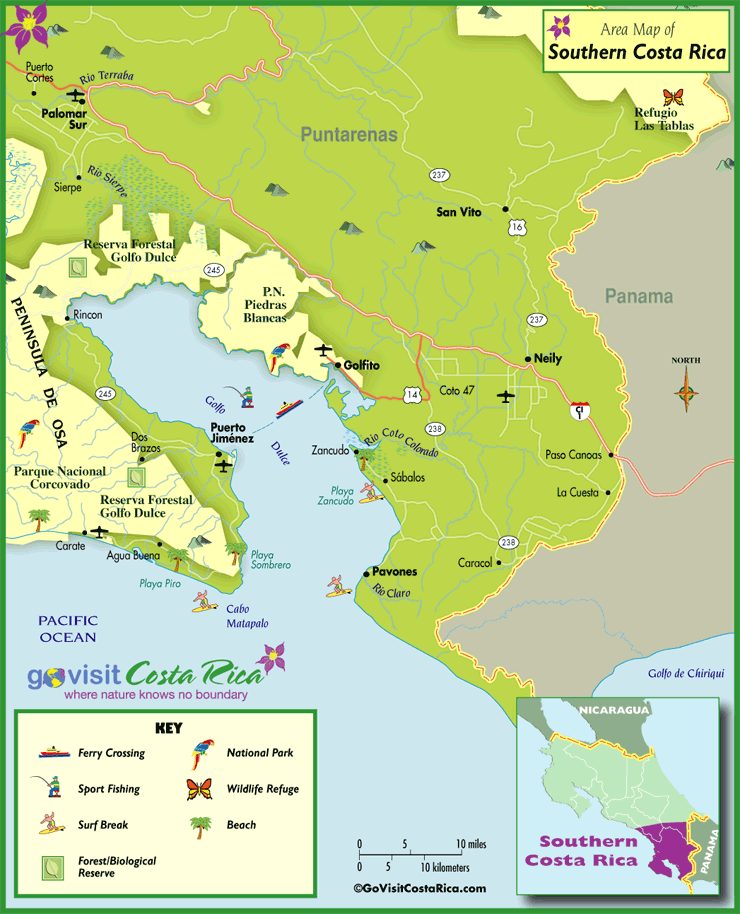
Travel and Lodging Near the Refuge
Although there is a huge range of hiking options in the refuge, camping enthusiasts will also find available options. Permits can be purchased from the nearest MINAE (Ministry of Environment and Energy) office for $10. The park itself is open daily between the hours of 8 a.m. and 4 p.m. If you’re coming from San Jose, car or bus rentals usually cost around $10 and require a travel commitment of around 10 hours. Although the trip is rather lengthy, you’ll be treated to some of Costa Rica’s legendary landscapes along the way. Be sure to work in a trip to the Golfito National Wildlife Refuge as part of your Costa Rica vacation!
12 Days / 11 Nights or 10 Days / 9 Nights
Starting at $2,352 per person
11 Days / 10 Nights
Starting at $3,874 per person






